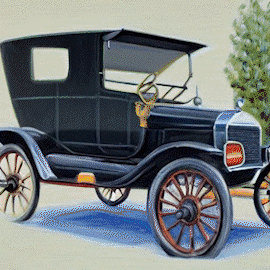i made a jupyter nb that interpolates between prompt embeddings as well as noise latents. created this animation that shows the evolution of a Ford Model-T to a Modern-day Ferrari ![]()

i made a jupyter nb that interpolates between prompt embeddings as well as noise latents. created this animation that shows the evolution of a Ford Model-T to a Modern-day Ferrari ![]()
